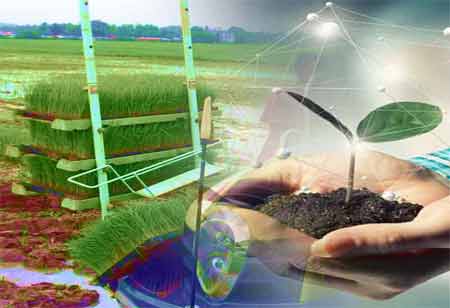Thank you for Subscribing to Agri Business Review Weekly Brief
Growing Importance of Livestock Management in Australia
Livestock management for small landholders in Australia requires a strategic and sustainable approach to ensure the well-being of animals, optimize land use, and contribute to the farm's overall success.

By
Agri Business Review | Wednesday, February 21, 2024
Stay ahead of the industry with exclusive feature stories on the top companies, expert insights and the latest news delivered straight to your inbox. Subscribe today.
Regular monitoring, adaptability, and a commitment to best practices are essential for thriving in the dynamic agricultural landscape of Australia.
FREMONT, CA: Livestock management for small landholders in Australia requires a strategic and sustainable approach to ensure the well-being of animals, optimize land use, and contribute to the farm's overall success. Small landholders operating on limited acreage must focus on efficient practices that prioritize animal welfare, pasture management, and profitability. Landholders should implement rotational grazing systems to optimize pasture utilization and prevent overgrazing. It involves dividing the land into smaller paddocks and rotating animals between them, allowing pastures to recover. The method improves forage quality, prevents soil degradation, and promotes healthy grass growth.
Maintaining appropriate stocking rates is crucial for small landholders. Overstocking can lead to overgrazing, soil erosion, and diminished pasture quality. Regularly assess the carrying capacity of your land and adjust stocking rates accordingly. It ensures that the available resources can support the number of animals on the property without causing long-term damage. Consider diversifying the types of livestock on the farm. Integrating various species, such as sheep, goats, and poultry, can provide ecological benefits by addressing different foraging habits and reducing the risk of disease transmission. Diversified livestock farming can create multiple income streams for the small landholder.
Providing balanced and nutritious feed is essential for the health and productivity of livestock. Small landholders should explore cost-effective feeding options, including pasture management, supplementary feeds, and mineral supplements. Regularly assess the nutritional needs of your animals, especially during critical stages like gestation and lactation. Periodically check water sources, pipelines, and troughs to prevent contamination and dehydration. Adequate water access is vital for animal health and productivity, particularly in the Australian climate, where drought conditions can be challenging.
Implement a proactive approach to animal health management. Develop a vaccination and parasite control program with the guidance of a veterinarian. Good biosecurity practices are crucial for small landholders to maintain a healthy herd or flock. Invest in proper infrastructure, including sturdy fences and well-designed handling facilities. Fencing helps control grazing patterns, protect vulnerable areas, and prevent conflicts between animals. Well-planned infrastructure facilitates efficient handling, reducing stress on livestock and landholders during mustering, shearing, or medical treatments.
Maintain accurate records of livestock management activities. It includes breeding records, health treatments, and any observed changes in behavior or productivity. Decision-making is aided by detailed records, which help cull unproductive animals and assess and plan breeding programs. Effective livestock management for small landholders in Australia requires a holistic and sustainable approach. Small landholders can maximize land productivity, enhance the well-being of their animals, and contribute to the long-term success of their farming endeavors by implementing rotational grazing practices, diversified livestock systems, and vigilant health management.





